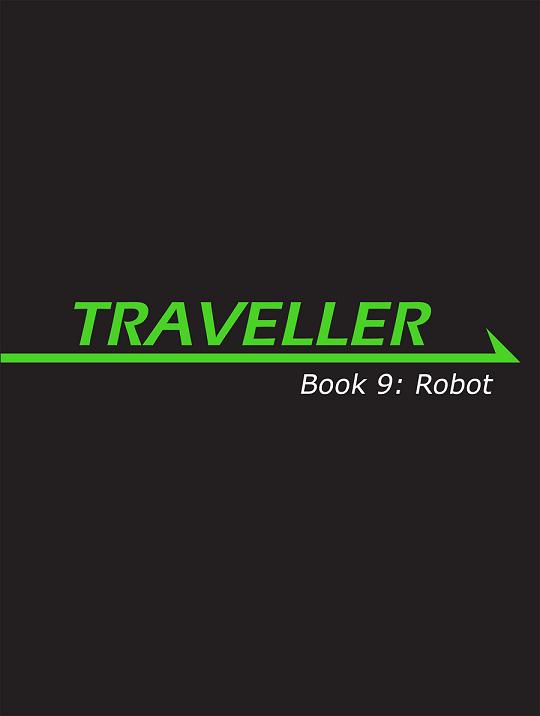Mongoose Traveller Book 9: Robot
Editor’s Note: This article originally appeared in Freelance Traveller’s May 2011 issue.
 Mongoose
Traveller Book 9: Robot. Uri Kurlianchik
Mongoose
Traveller Book 9: Robot. Uri Kurlianchik
Mongoose Publishing http://www.mongoosepublishing.com
102pp, softcover
US$24.99/UKú16.99
Mongoose extends their Traveller line into the relatively unexplored ground of the robot.
On the Shelf
Robot, being a setting-independent rules expansion, follows the appearance of previous such expansions - the cover is basic black with the Mongoose Traveller logo in green. The tagline for this book is “Inheritors of Man”.
Our German-speaking readers should note that this is not an English translation of the 13 Mann supplement, Roboter, nor is 13 Mann’s supplement a German translation of this.
Initial Impressions
The eight chapters of this volume are clearly divided into a basics section, containing the rules needed for constructing robots, whether they are to be used in the role of equipment, NPC, or player-character, and an ideas section, discussing the possible relationships between robots and humans, and ways of using robots in adventures, whether as goal, PC, NPC party member, or Patron. The first chapter of the ideas section, “The Science of Robotics”, can be viewed as a bridging chapter between the sections, as it also contains rules for handling damage to and repair of robots, and for the rare occasion of a high-capability robot spontaneously crossing the line into true sophonthood.
On Closer Inspection
Moreso than the robot rules for previous versions of Traveller, this volume provides a comprehensive guide to constructing and using robots in Traveller, both from the technical viewpoint (structure and software) and the in-game viewpoint (encounters, robots as NPCs, robots as PCs, careers for robot PCs, careers for roboticist PCs). The play rules touch briefly on the relationships between robots and humans, and the sorts of laws governing their interactions and/or the rights of robots, as they would affect robot PCs.
The ideas section contains extensive discussion of the possible relationships between robots and humans (as societies), ranging from the early “robot-as-service-equipment” through “robots-as-helot/serf/slave” and “robot-as-citizen/equal” to “robot-as-ruler/caretaker” and “robot-as-successor”. The relationship and status of robots and humans, and the state of the law governing each, is profiled to a useful, but not overwhelming, depth, and each type of relationship also has adventure seeds (much like those in Freelance Traveller’s “Getting Off the Ground” section) that include options for both human and robot PCs. Worthy of note is the fact that, while not ignored, the possibility of the hostile, out-of-control robot (“Frankenstein’s Monster”) is strongly discouraged, and with limited exception, the Asimovian Laws of Robotics are almost universally assumed.
Artwork is sparse, and is all line sketches. Most of what is there depicts robots that would be classed as ‘humanoid’ or ‘bipedal’, which is somewhat misleading, as the book does discuss—and have rules for—other forms.
If this volume can be said to have a shortcoming, it would certainly be its lack of discussion of robots in the various Mongoose-supported settings, whether the Third Imperium, 2000AD (Judge Dredd and Strontium Dog), or Babylon-5. This would have been a useful additional (short) chapter in the ideas section, as the sourcebooks for these settings were all released before this book was contracted, and thus had no basis for discussing the topic of robots themselves.
Conclusion
This volume is definitely not for everyone; it assumes that you will be integrating robots into your campaign as much more than just local color or furniture. For those who want what it offers, though, it's definitely worth the money, being chock-full of useful information.
 Freelance
Traveller
Freelance
Traveller